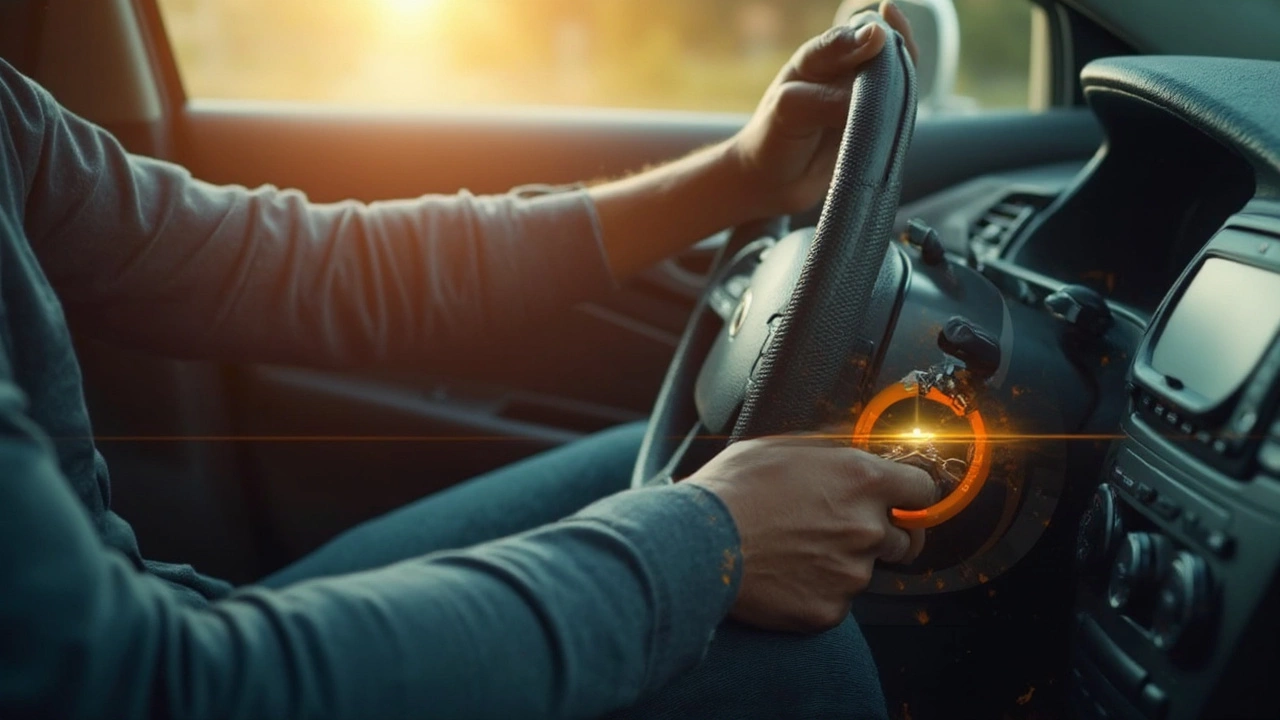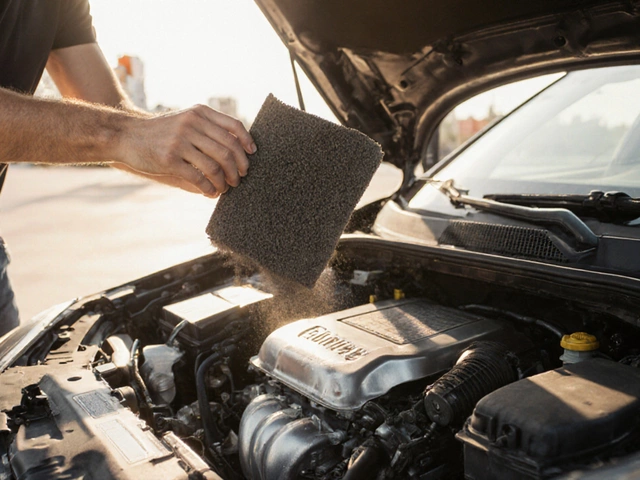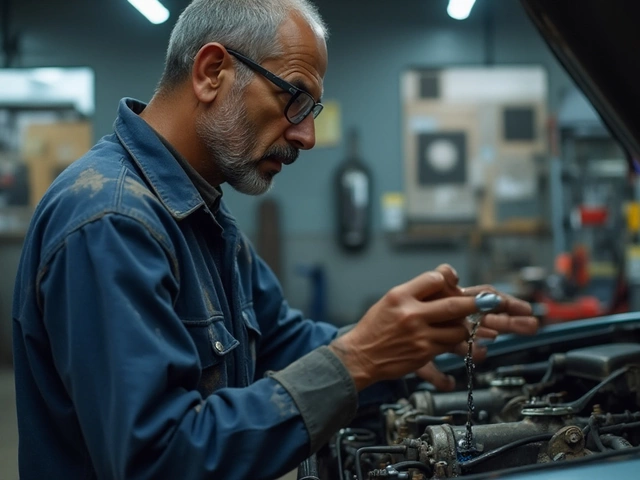Ever heard horror stories about a clutch burning out at 30,000 miles when your buddy swears his Toyota’s still kicking at 140k? Welcome to clutch roulette. Your transmission’s faithful sidekick, the clutch, deals with every traffic jam crawl and full-throttle launch—yet there’s no countdown clock ticking above your pedals. So how do you know when it’s giving up, and what can you actually expect from a typical clutch before you’re stranded at the side of the road?
What’s the Real Average for Clutch Lifespan?
The most quoted range you’ll hear: a clutch usually lasts anywhere from 50,000 to 100,000 miles. But let’s get honest—there’s no factory guarantee, and clutch life dances all over the map. Here’s what the data says, straight from real-world surveys and manufacturers. According to a 2024 industry reliability study from Statista, the median reported lifespan for clutches in compact sedans was 83,000 miles. Pickup trucks clocked in a bit lower, around 75,000, mostly due to towing and heavy use. Certain models like the Honda Accord are known for squeezing past 110,000 miles, while high-torque performance cars (looking at you, Ford Mustang drivers) frequently need a new clutch by around 45,000 miles.
Check out this clutch lifespan comparison from the 2024 Auto Reliability Survey:
| Vehicle Type | Median Clutch Lifespan (Miles) |
|---|---|
| Compact Sedan | 83,000 |
| Pickup Truck | 75,000 |
| Performance/Sports Car | 52,000 |
| Hybrid Manual | 94,000 |
There are wildcards too—some drivers still rock original clutches at 140,000 miles, while heavy city commuters can wear one out in half that. What’s the deal? It comes down to how you drive, where you drive, and even who taught you to drive. Did your driver’s ed instructor threaten to smack your knuckles for resting your foot on the pedal? Turns out, they’re onto something.
Manufacturers sometimes put suggested intervals in their maintenance schedules, but rarely commit to a strict number. For example, VW’s 2019 Jetta technical docs suggest an “inspection” at 60,000 miles but don’t expect pre-emptive swaps. It’s a matter of ‘replace when slipping’ rather than by-the-book swaps like timing belts.

The Real Reasons Clutches Fail Early (or Last Forever)
There’s a running joke among mechanics that clutches don’t die—they’re murdered by their owners. But it’s not always user error. You’ve got several big factors that mess with clutch lifespan, and plenty you can actually control.
- Driver Habits: Here’s where things get personal. If you ride the clutch (which basically means resting your foot on the pedal slightly), start off in second gear, or treat your car like a rally stage with every green light, you’re grinding away precious miles. Even letting your car idle in first at red lights with the clutch down is shaving off life. Avoiding these habits isn’t hard, but old habits die annoyingly hard.
- Driving Environment: City driving kills clutches faster than rural highways because you do a ton more shifting and idling. Stop-and-go traffic, hill starts, and endless parking garage ramps? That’s clutch life draining out, drip by drip. Meanwhile, lots of open road cruising means fewer gear changes and a much longer life.
- Car Type and Tuning: High-performance or turbocharged cars wear out clutches faster. Same goes for oversized wheels or heavier vehicles than what the clutch was designed to handle. Modding your engine for more power but keeping the stock clutch? Bad math.
- What You Haul: Tow a boat up steep grades every weekend? Expect wear in overdrive. The more weight and torque a clutch needs to manage, the more it ages with every pullout.
- Component Quality and Installation: Cheap aftermarket clutches or shoddy install jobs do no favors. Weird vibrations, rattles, or even misaligned flywheels all cut down life, sometimes brutally fast. Some folks cheap out only to redo the job twice.
Want more clutch for your money? Here’s a pro tip: the difference between a dead at 40k and thriving at 120k often comes down to respecting warm-up time (let your engine get settled before aggressive driving), releasing the pedal fully between shifts, and NOT using the clutch to hold you on a hill (use the brake instead, or get good with the handbrake technique).

Warning Signs and Replacement: Don’t Get Stranded
Even pros sometimes miss the early signs a clutch is on the way out. Don’t count on a glowing dashboard light—clutches rarely trigger one. Start paying extra attention as your car gets older (around or after the 60,000-mile mark), especially if your driving gets rougher or your commute turns into a daily traffic battle. Here’s what to watch for:
- Slipping: If your engine revs jump but your speed doesn’t catch up—especially on hills or under load—your clutch is slipping. You might also notice this in higher gears first. Don’t ignore it. If you’re playing this game too long, you’ll cook what’s left of your friction plate fast.
- Hard Shifting or Grinding: When it gets tough to shift gears (especially first and reverse), or you hear grinding despite proper clutch pedal use, things are wearing out below your feet. Sometimes it’s just the cable or fluid, but a worn pressure plate is also likely.
- Vibration or Chatter: If the pedal kicks back, shudders, or the car jumps on takeoff, don’t write it off as bad technique or cold mornings. Something’s up, often a warped clutch disc or heat-damaged surfaces.
- Spongy or Stiff Pedal: A pedal that feels lighter or stiffer than normal can point to hydraulic trouble or worn parts inside. Small changes here are worth getting checked—catching damage early is way cheaper than a total clutch job later.
- Burning Smell: Sort of like hot brakes, but sharper. This is friction material cooking away, usually after too much slipping or bad abuse. If you keep smelling this after hill starts or towing, the clock is ticking.
Here’s the no-nonsense cost talk. In the US, replacing a standard clutch in 2025 averages $800 to $1,500 at a shop, including parts and labor. Some complex or performance cars (think BMW M3 or Audi S4) can clear $2,000-3,500. DIY’ers with a jack and some guts can save a chunk, but it’s never as quick as the YouTube pros make it look—expect a full weekend and lots of wrestling with heavy, greasy parts.
The absolute worst thing you can do is ignore slipping and noise. Not only can you get stranded, but you can also trash the flywheel, hydraulics, and even the transmission—multiplying the bill by thousands. If you think you’ve got time to wait until “next payday,” remember: clutches rarely fail at a convenient time. If you hear the warning signs, make a plan.
Quick table for replacement cost averages by vehicle size in 2025:
| Vehicle Size | Average Replacement Cost |
|---|---|
| Compact Sedan | $850 – $1,100 |
| Mid-Size Sedan | $950 – $1,350 |
| Performance Car | $1,950 – $3,500 |
| Pickup Truck | $1,200 – $1,800 |
And here’s a pro move—if you’re swapping the clutch and your car’s well used, go ahead and replace the throw-out bearing, pilot bearing, and check the rear main engine seal. Labor costs are the same, and you save a headache.
Want a longer break before the next replacement? Check your owner’s manual for fluid change intervals, avoid unnecessary clutch slips, and don’t be afraid to ask a trusted mechanic to check cable/hydraulic play every major service. The more you baby it, the more your clutch lifespan surprises you in a good way.




